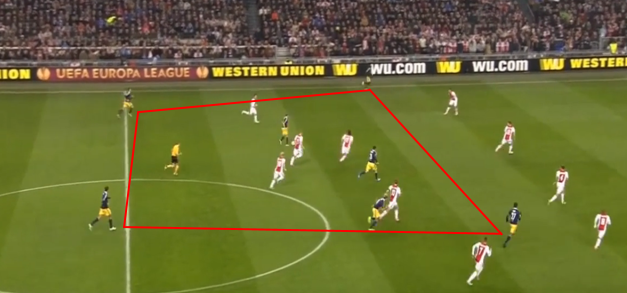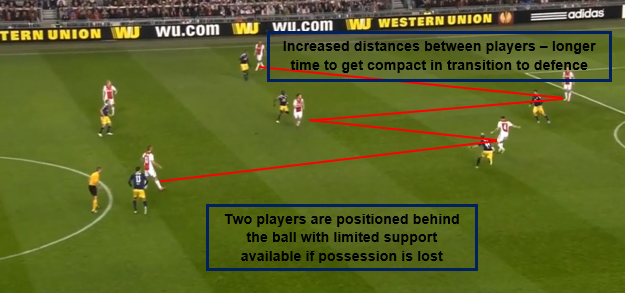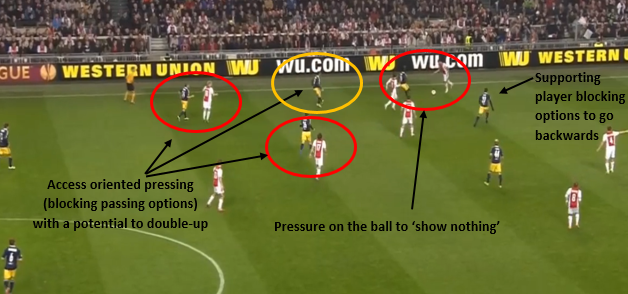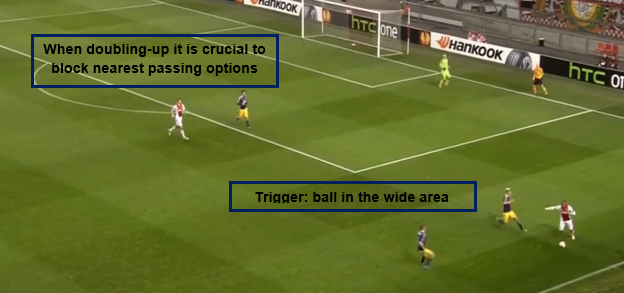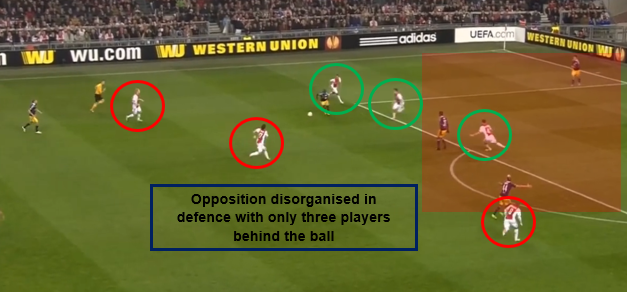By Alex Trukan
Red Bull Salzburg was a revelation in the 2013/2014 season, winning the domestic league, cup as well as knocking out renowned Ajax Amsterdam in the Europa League. In the current season, the club is also leading the league with 10 points above second Rapid Wien and four matches to go. However, it is not the results that drew the main attention to the club from Salzburg. The club has become widely known for its ultra-high pressing, attacking style of play. Pep Guardiola, a coach of Bayern Munich, after playing a friendly match against Red Bull Salzburg managed by Roger Schmidt at that time, stated: I’ve never played in my career against a team that has played with such a high intensity’. The philosophy which has been brought to the club by Ralf Rangnick, Red Bull global technical director is unique, controversial and at the same time fascinating to analyse. One of the tactics used by Red Bull Salzburg is ‘counter-pressing’, which can be defined as a defending strategy that is aimed at regaining possession after losing it, taking advantage of the opposition defensive disorganisation in the transition to attack.
False narrowness in the attacking phase
If Red Bull Salzburg was using full width and length of the pitch in the attacking phase, the distances between players wouldn’t allow the team to get narrow quickly enough in order to restrict opposition’s space and win the ball back. Therefore, the first stage of ‘counter-pressing’, surprisingly starts when the team is still attacking. As we can see on the diagram below, distances between the players are compact, which can seem strange when attacking. However, the aim of that is to be immediately prepared to get narrow and pressurize the ball if the possession was lost.
Taking advantage of losing possession
As soon as the possession is won by the opposition, their team makes a transition to attack, increasing the distances between players and getting wider and deeper up the pitch. That creates great opportunity to win the ball back straight away and exploit opposition’s weakness in defence. This is the main rationale behind ‘counter-pressing’ strategy.
Pressing, support and cover
The main requirement to make the ‘counter-pressing’ tactics effective is an immediate pressure on the ball. However, in opposite to traditional pressing, the aim of it is not to force play into certain areas but win the ball back as soon as possible. On the diagram below we can see a mixture of ball oriented (near pressure on the ball) and access oriented (defender positioned in behind of the player to block passing options) pressing.
Doubling-up
Very common strategy in order to increase the pressure on the ball and a chance of winning the ball back is doubling-up. Second and even third player instead of showing support around the ball, pressurises the opponent who is in possession. That increases psychological pressure what usually forces the player in possession to play long or lose the ball. Doubling up starts on certain triggers such as: ball in wide areas, bad touch, slow pass, certain player in possession.
[wpsharely id="2988"][/wpsharely]Transition to attack
Big advantage of counter-pressing strategy is that if the ball is won, it is usually already located in the final third, and the opponents are out of balance as they have just attacked and lost possession. Therefore, ‘counter-pressing’ becomes the best playmaker.
Counter-pressing can be an effective defensive strategy if the players understand why, where, when and how to use it. It is important that the team knows how to break through the opposition in a different ways, and only uses counter-pressing as a ‘back-up’ strategy. Counter pressing can also be used only in certain games, for example, when playing against stronger opposition with high ball possession percentage. Finally, as Jurgen Klopp has stated, “you can’t tell the players: ‘you stand here & if this happens, you run there’. Instead you have to train the impulse…It has to be an impulse to move into a ball-winning position immediately after losing the ball.”
By Alex Trukan, Development Coach, Nottingham Forest

